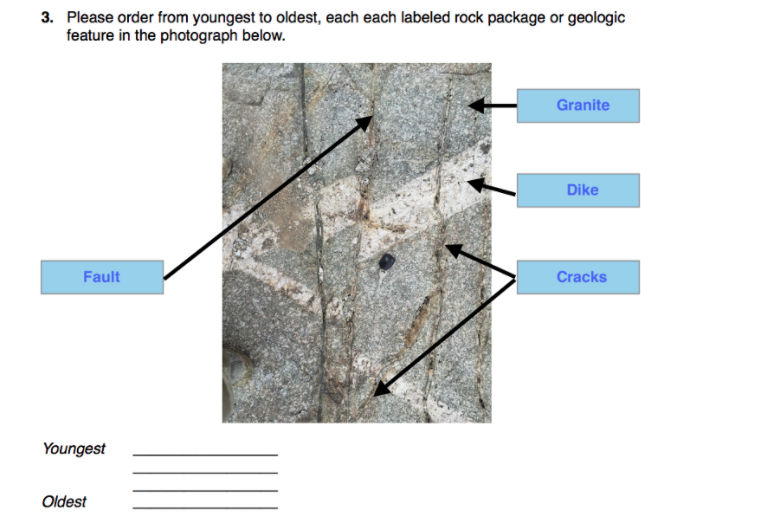

The principle of lateral continuity states that a set of bed extends and can be traceable over a large area. A lithostratigraphic unit conforms to the law of superposition, which in its modern form states that in any succession of strata, not disturbed or overturned since deposition, younger rocks lies above older rocks. The principles of lithostratigraphy were first established by the Danish naturalist, Nicolas Steno, in his 1669 Dissertationis prodromus. The principle of original horizontality states that the deposition of sediments occurs as essentially horizontal beds. The principle of superposition states that a sedimentary rock layer in a tectonically undisturbed stratum is younger than the one beneath and older than the one above it. When an igneous rock cuts across a formation of sedimentary rock, then we can say that the igneous intrusion is younger than the sedimentary rock. There are a number of principles that are used to explain the appearance of stratum. Igneous layers are generally devoid of fossils and represent magmatic or volcanic activity that occurred during the geologic history of an area. Igneous layers occur as stacks of lava flows, layers of lava fragments (called tephra) both erupted onto the Earth's surface by volcanoes, and in layered intrusions formed deep underground. These layers are often distinguishable as having many fossils and are important for the study of biostratigraphy. Sedimentary layers are laid down by deposition of sediment associated with weathering processes, decaying organic matter (biogenic) or through chemical precipitation. In general, strata are primarily igneous or sedimentary relating to how the rock was formed. Major focuses include geochronology, comparative geology, and petrology. By comparison of overlapping sequences, it is possible to build up a continuous record of faunas or floras that have progressively more in common with present-day life-forms as the top of the sequence is approached.Lithostratigraphy is a sub-discipline of stratigraphy, the geological science associated with the study of strata or rock layers. In such sequences of layers in different places, the same, or similar, fossil floras or faunas occur in the identical order. It is often observed that each layer in such a sequence contains fossils that are distinct from those of the layers that are above and below it. In some places, such as the Grand Canyon in Arizona, it is possible to recognize a great thickness of nearly horizontal strata representing the deposition of sediment on the seafloor over many hundreds of millions of years. A brief treatment of the fossil record follows. Occasionally the original material is simply removed while nothing is deposited in its place in this case, all that remains is a mould of the shape of the plant or animal. In a few cases the original substance of the hard parts of the organism is preserved, but more often the original components have been replaced by minerals deposited from water seeping through the rock. SpaceNext50 Britannica presents SpaceNext50, From the race to the Moon to space stewardship, we explore a wide range of subjects that feed our curiosity about space!įossil record, history of life as documented by fossils, the remains or imprints of organisms from earlier geological periods preserved in sedimentary rock.

:max_bytes(150000):strip_icc()/Slumping-5b7ae18446e0fb002c2f530c.jpg)
Learn about the major environmental problems facing our planet and what can be done about them!
#Diagram of undisturbed strata youngest rock how to#
COVID-19 Portal While this global health crisis continues to evolve, it can be useful to look to past pandemics to better understand how to respond today.Student Portal Britannica is the ultimate student resource for key school subjects like history, government, literature, and more.This Time in History In these videos, find out what happened this month (or any month!) in history.#WTFact Videos In #WTFact Britannica shares some of the most bizarre facts we can find.Demystified Videos In Demystified, Britannica has all the answers to your burning questions.Britannica Explains In these videos, Britannica explains a variety of topics and answers frequently asked questions.Britannica Classics Check out these retro videos from Encyclopedia Britannica’s archives.


 0 kommentar(er)
0 kommentar(er)
